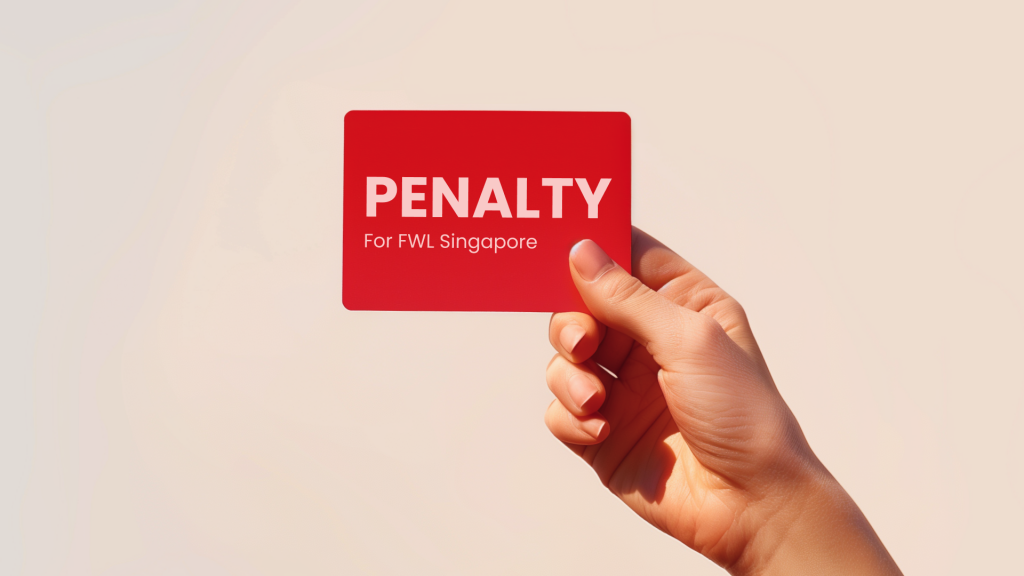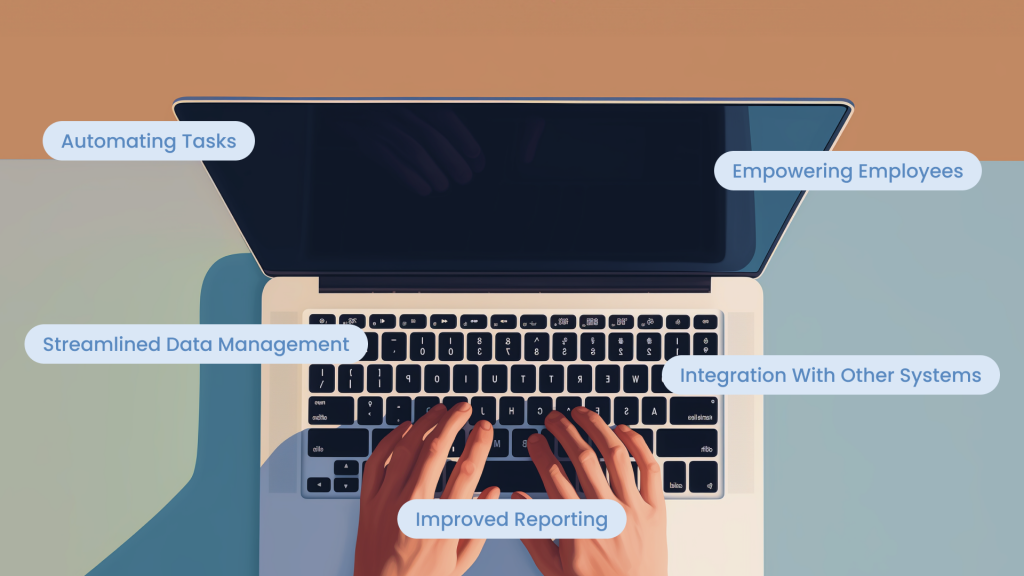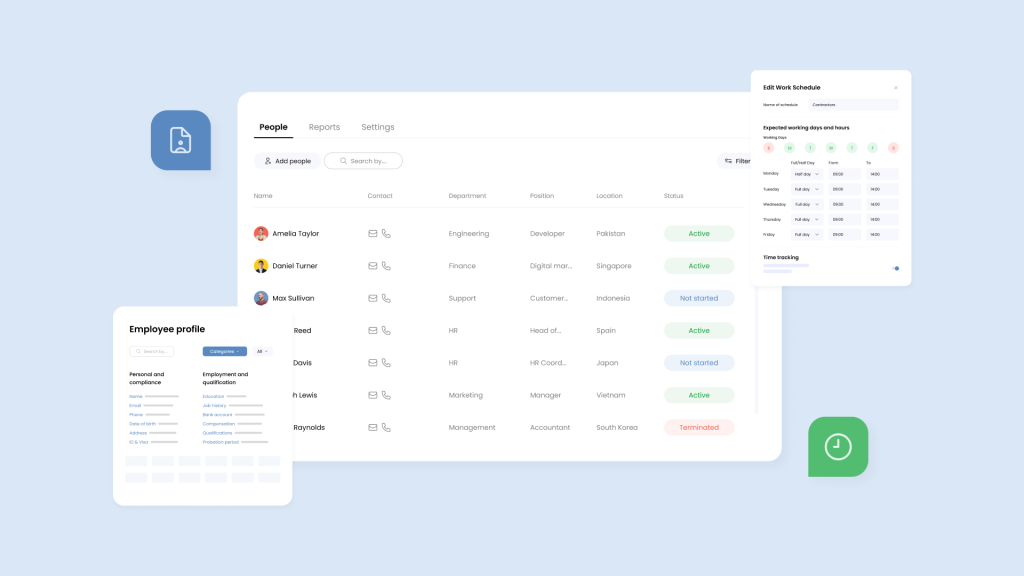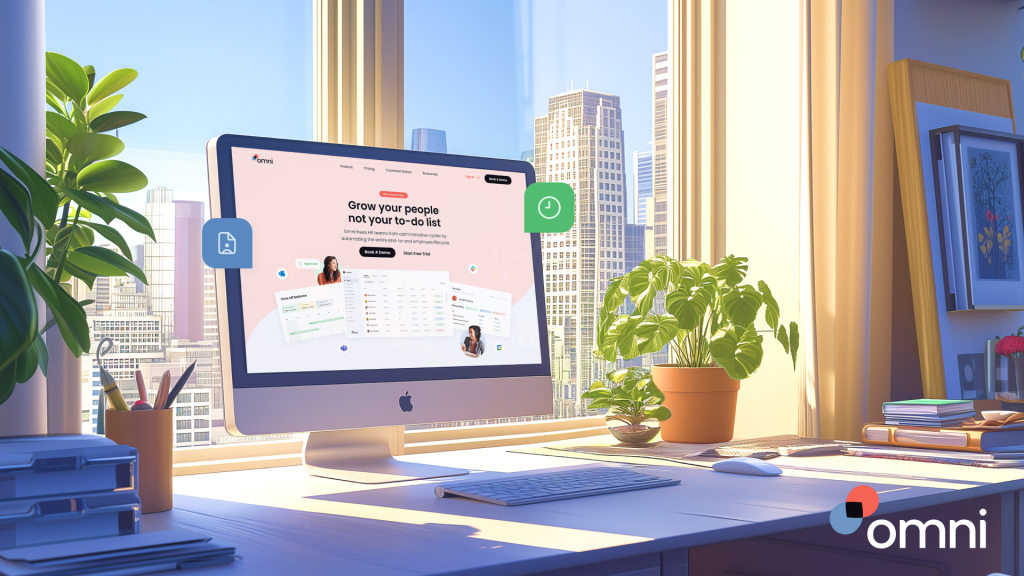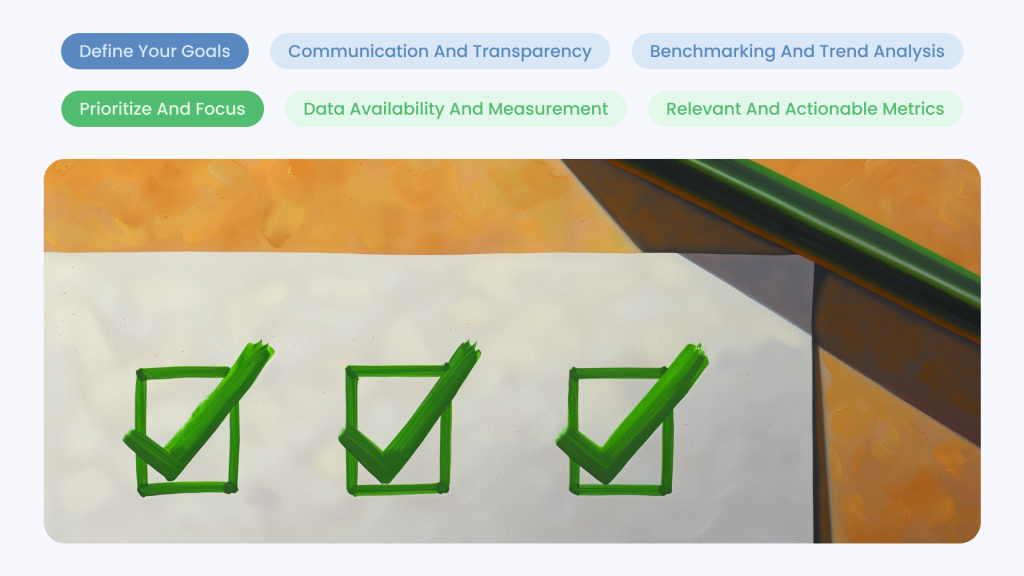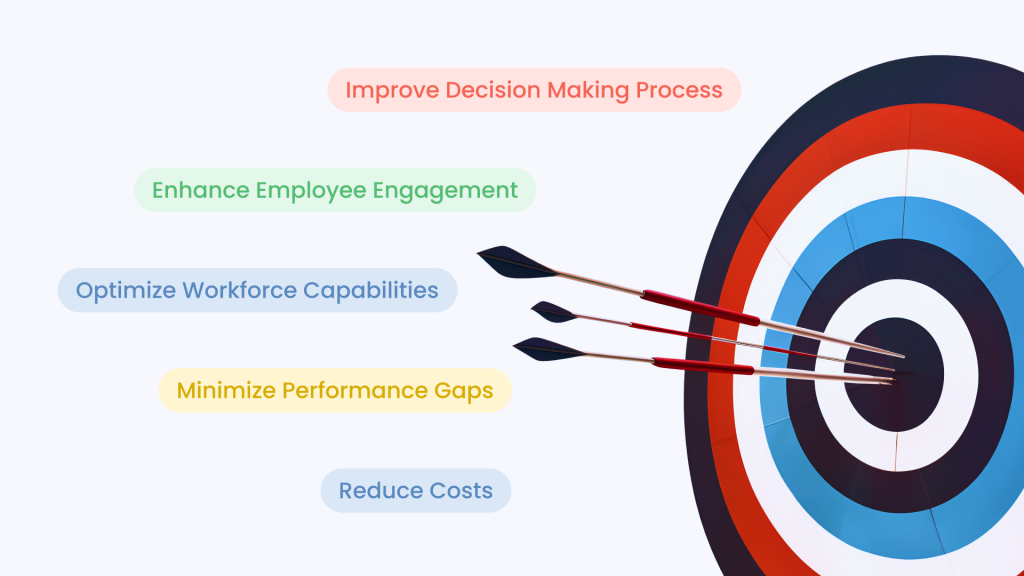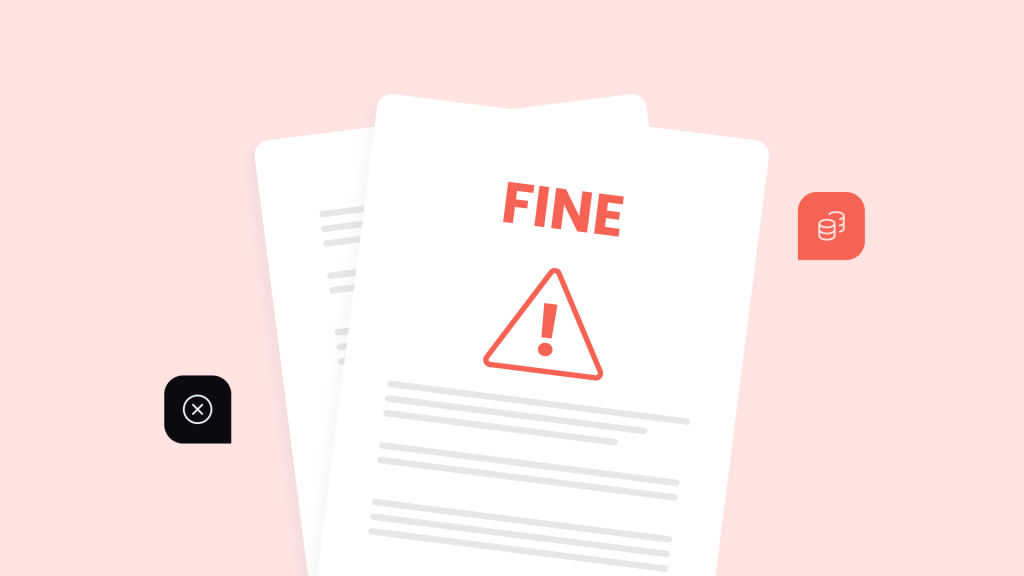According to a recent Statistica survey in Asia Pacific, the majority of employees prefer hybrid work arrangements. Deloitte’s survey further mirrors that idea, emphasizing that “37% of Asia Pacific respondents say they allow international remote work,” compared to 25% in the Americas.
It’s clear that flexible working is taking Asia Pacific by storm, making it essential for you to update your flexible working policy to create an optimum working environment that both retains your employees and attracts top talent.
In this article, we’ll walk you through the different types and benefits of flexible work arrangements and provide you with a flexible working policy template to get you started, alongside best practices to communicate your policies.
Relevant reading: Understanding Singapore’s 2024 Tripartite Guidelines For Flexible Work Arrangements (FWA)
What are the types of flexible working?
Understanding the types of flexible working can help you envision the kind of workplace you want to establish, and make it easier to set up your flexible working policy template.
- Remote Work: Remote work is where your employees work from a place other than the company premises, such as their home or coworking spaces. It can apply to full-time jobs or be part of a hybrid arrangement. Microsoft is a great example as it hires for several remote jobs, such as software engineers, program managers, onboarding managers, and security sales specialists.
- Flexitime: The flexitime flexible work policy example allows your employees to choose when to start and end work within a broader timeframe (provided that they work during core hours and work a certain number of hours per month). Google has a flex time policy, encouraging employees to choose their working hours.
- Compressed Workweek: In the compressed workweek flexible work policy example, employees work longer hours so that they can work fewer days that amount to the same total working hours. You can find a flexible work policy example for this in Panasonic (with an optional four-day week policy to accommodate new economic policy guidelines in Japan).
- Part-Time Work: In the part-time flexible work policy example, your contractor works less than the full-time hours. Some companies allow part-time arrangements for all jobs except when it’s impractical. Zillow, the online real estate marketplace, offers part-time work, thanks to their flex time policy.
- Job Sharing: In a job sharing flexible work policy example, a full-time post is divided into two part-time ones. Both employees have compatible skills and share the responsibilities and duties. If you’re looking for a flexible work policy example for this one, look at Target and Deloitte where employees can coordinate and request job-sharing from their HR department.
Why is a flexible working policy important?
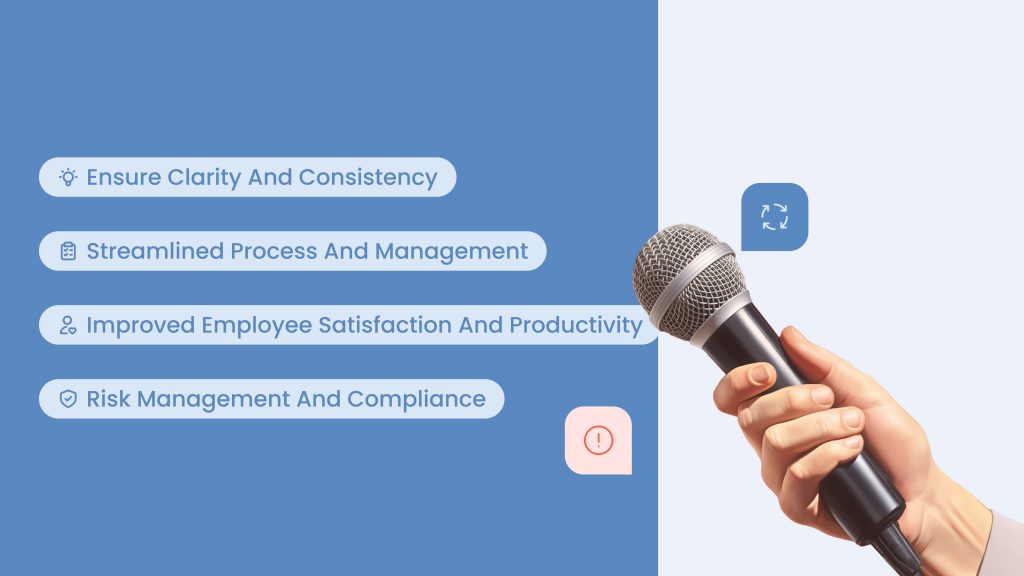
Now that we’ve established the types of flexible working, you might wonder what these big corporations see in a flexible working policy template. Here’s why:
Ensure clarity and consistency
Setting a flexible working or a flex time policy is necessary so that all employees are clear about the areas of flexibility in your system and so that they apply to everyone. As such, it should outline the organization’s flexible practices clearly.
With such a flexible working policy template, managers can maintain consistency in their decision-making, promoting fairness. As for employees, they can fully grasp their rights and form their expectations.
Streamlined process and management
A flexible working arrangement requires coordination, which is where the flexible working policy template comes in. You can customize it to include all the details that facilitate management and streamline the process.
If you’re looking for a flexible work policy example here (like a flex time policy), your policy should detail the core hours, for instance. This way, your managers will know when all their teams will be online so that they can schedule meetings and synchronous work during those hours.
Additional reading: How to Implement an Asynchronous Work Environment
Improved employee satisfaction and productivity
One of the main goals of implementing a flexible working or flex time policy is to boost employee satisfaction and productivity levels. According to the National Institutes of Health, working from home, employees changing their schedules, and any similar flexible work policy example furthers employee well-being.
Naturally, employee well-being and satisfaction levels reflect directly on productivity levels. Emotionally healthy and motivated employees go above and beyond, and this heightened productivity means better problem-solving and brainstorming.
Risk management and compliance
Using a flexible working policy template to formulate yours helps you comply with labor laws and mitigate non-compliance risks, which means avoiding penalties, legal complications, or potential disputes.
Let’s say you decide to establish a “work from anywhere” flexible working policy, and an employee may move to a different jurisdiction where you don’t have premises. It’s important to consider questions such as ‘What are the tax implications for that?’ and ‘What local and state regulations do you need to meet?’
Referring to a flexible working policy template enables you to create better guidelines for remote work. This way, you can mitigate compliance risks proactively.
What to include in your flexible working policy?
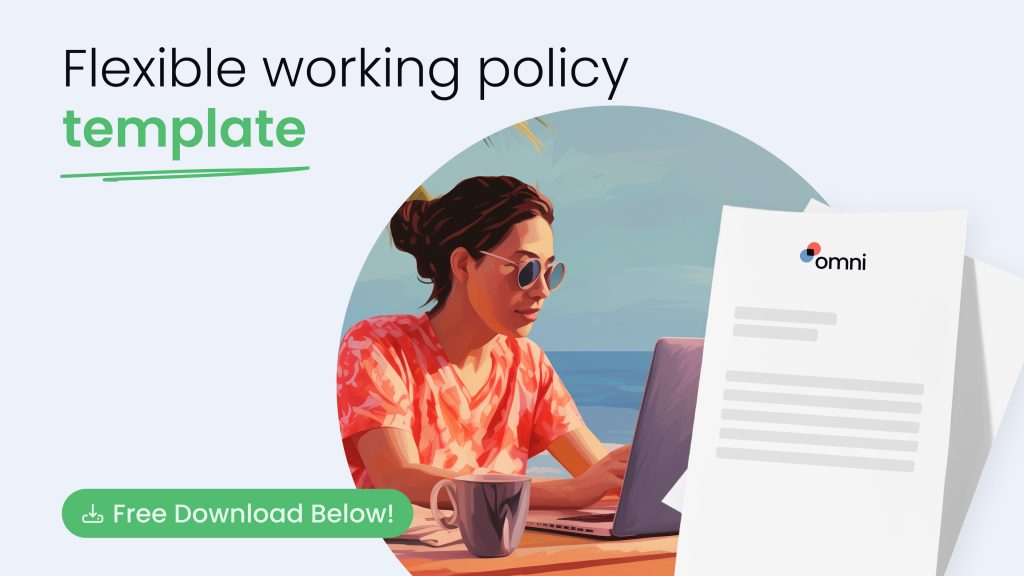
Now that we’ve established the importance of a flexible working policy template, here’s what you need to know when considering what to include within your flexible working policy:
1. List out the available types of flexible work arrangements
Do you want to establish a remote, hybrid, or flex time policy? A flexible working policy template states the types of flexible arrangements allowed in a workplace, from which you can pick the ones that serve and align with your company mission and vision.
2. Eligibility criteria
The second step in creating a policy for flexible working arrangements is to determine the eligibility criteria. Are all employees allowed flexible working arrangements or a flex time policy, or do they apply to a certain group? Personalize a flexible working policy template to suit your workplace needs.
When you set the eligibility criteria, you should be mindful of the nature of the position, team needs, impact on colleagues, and business impacts. To illustrate, an employee’s job may require their attendance during certain hours or involve tons of synchronous work, which may be difficult for flexible arrangements under your flexible working hours policy.
3. Application process
A flexible working policy template should detail the procedures of the application process for flexible work arrangements or flex time policy approval. They’ll need to submit a flexible working request, and your policy should detail the needed information in that request, such as:
- The request date
- The desired changes to the work arrangements
- Whether the request is statutory or non-statutory
- Whether this is their first flexible working request or not
- The dates of their previous flexible working requests (if present)
4. Approval process and timelines
After you receive the request for a flex time policy, what is the standard procedure? How should your HR team make the decision? They’ll reference the eligibility criteria.
A flexible working policy template might make this approval on a case-by-case basis (depending on the benefits and drawbacks of the proposed change to the employee and the organization). If the request requires more back and forth, you can formulate a policy that allows HR specialists to invite the employee in question to a consultation meeting.
Also, the flexible working or flex time policy should include the documentation method in case of the approval of the request. For instance, it may be in writing (along with the details of the new arrangements and any meetings to discuss them). It should include the procedures for appealing to the response.
Finally, any flexible working policy template includes timelines for each step. What is the timeline for responding to a flexible work or flex time policy request? What is the timeline for setting a meeting to discuss that request? What about lodging appeals and hearing them in case of rejection?
5. Responsibilities for employers and employees
Finally, you want your flexible working or flex time policy to detail the responsibilities of employers and employees in your work environment.
Let’s take a flexible work policy example. You implement a hybrid working arrangement. How many days per week do your employees need to attend in person? Is attendance optional? Do you need to provide workstations to accommodate them?
Best Practices for Communicating Your Flexible Working Policy
After you’ve developed your flex time policy based on our flexible working policy template, you’ll need help communicating it so that employees and managers implement it properly, creating the flexible work environment you strive for.
Be transparent and communicate clearly
The implementation of your flexible working or flex time policy is contingent on your transparency and clear communication with the relevant stakeholders, including employees, leaders, and cross-functional departments.
Use the appropriate channels to cover the new policies, whether that’s a webinar, meeting, or workshop. Explain how important this information is and why it’s important, along with the reason behind and implications of your policy changes.
Read next: Navigating the Digital Divide: Enhancing Remote Team Communication
Make it easily accessible
Your employees should have easy access to your flexible arrangement or flex time policy. For that, you can include the modified flexible working policy template in your employee handbook, making it easier for employees to refer when shifting to a flexible working arrangement.
Set up internal Q&A platforms
Look at any successful flexible work policy example or flexible working policy template. Chances are that the HR team provides employee support.
Therefore, you’ll need to establish an internal Q&A platform: an online discussion forum for your employees where they can voice their concerns, ask questions, and offer suggestions. Along with the responses, they should be published and retained so that employees can refer to them in the future.
Provide regular updates
As is the case with any new flexible work policy example, you’ll need to review and update it regularly. Working conditions are always evolving, and, in any thriving flexible work policy example, it should evolve with them.
This way, your flex arrangement or flex time policy can accommodate the dynamic needs of the workplace, changing legal requirements, and constructive employee feedback about the flexible working policy template. Be sure to communicate relevant updates and explain the thought process behind them to foster and maintain employee trust.
Streamline Flexible Working with Omni
Flexible working arrangement brings about plenty of benefits to the organization such as employee retention, satisfaction, and productivity. A robust flexible working policy is crucial to ensure the success of guiding approval and managing flexible work arrangements within your organization.
Omni’s centralized document management solution makes it easy to gather the necessary data required to create the flexible working policy that suits your organizational needs. With customized workflows and automated reminders, HR can help empower employees to manage the deadlines and documentation requirements for flexible work arrangements as required within your flex time policy. And centralized documents and real-time data makes it easy for employees to get notified on their request status.
Book a demo with our team to learn more about how Omni can streamline your flexible working options.










